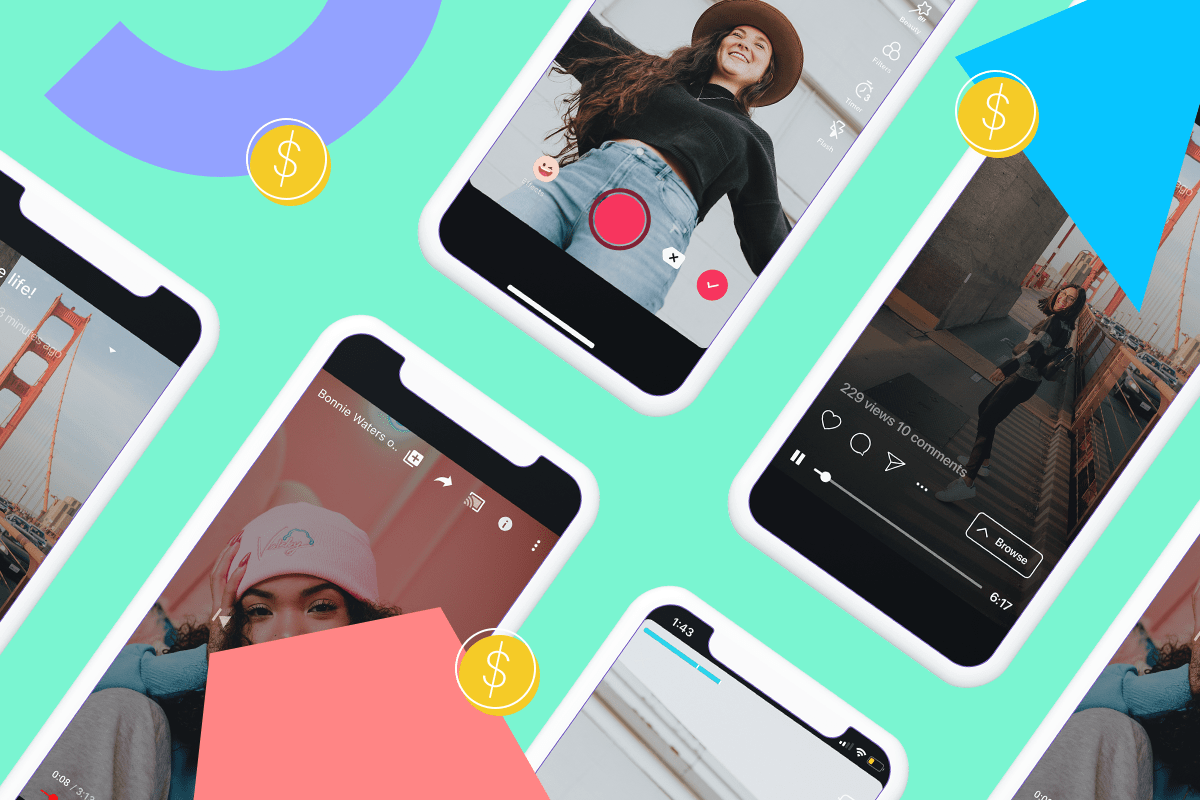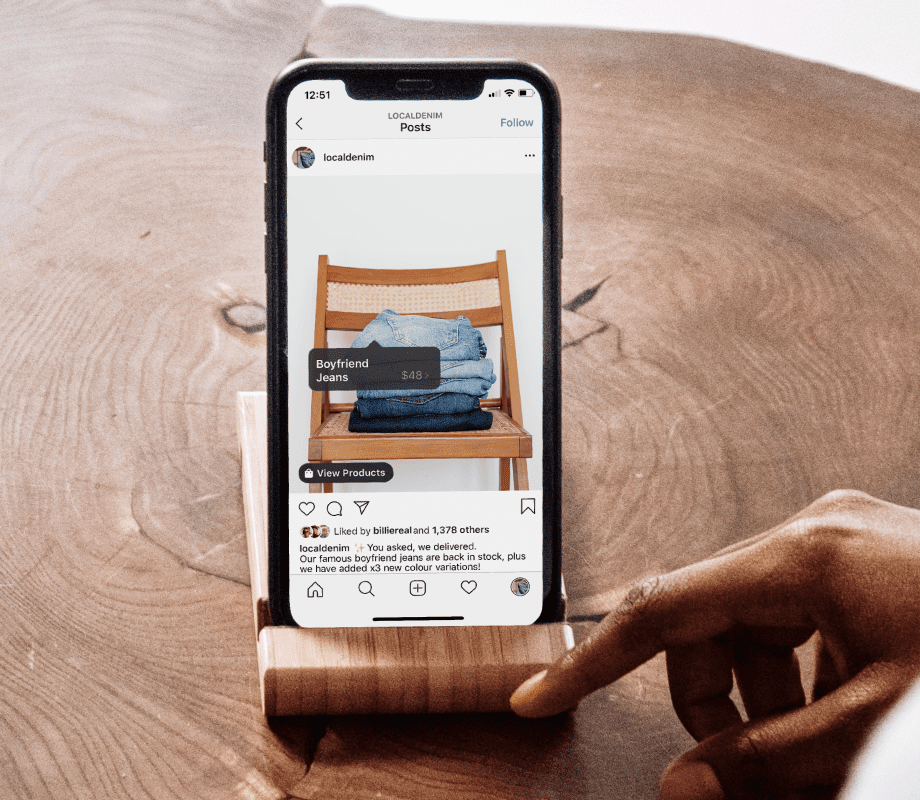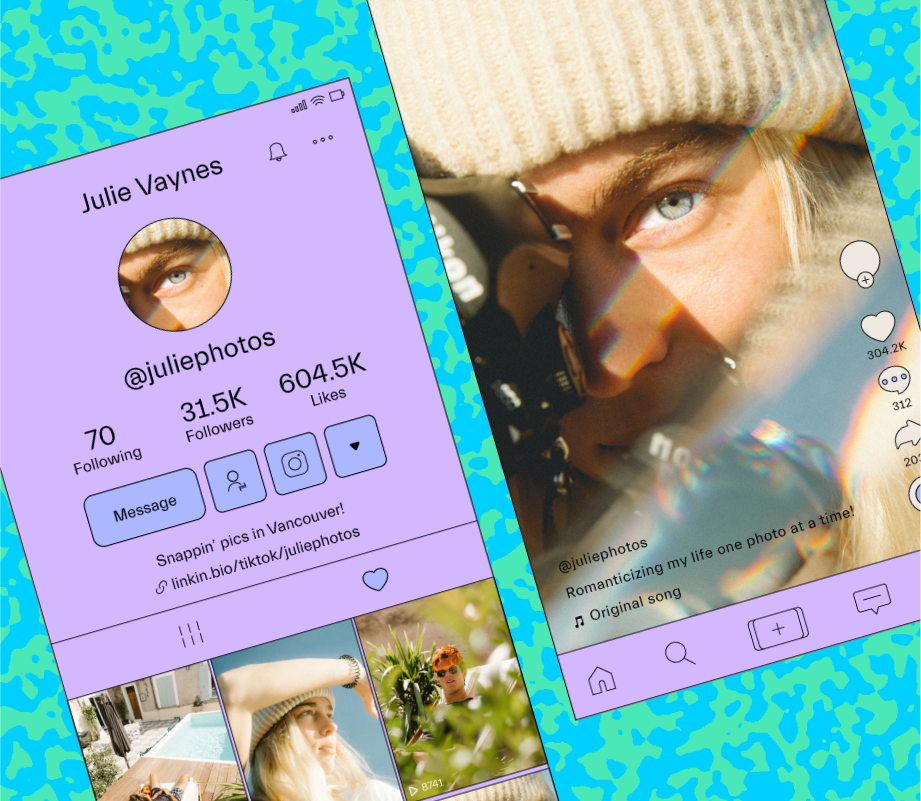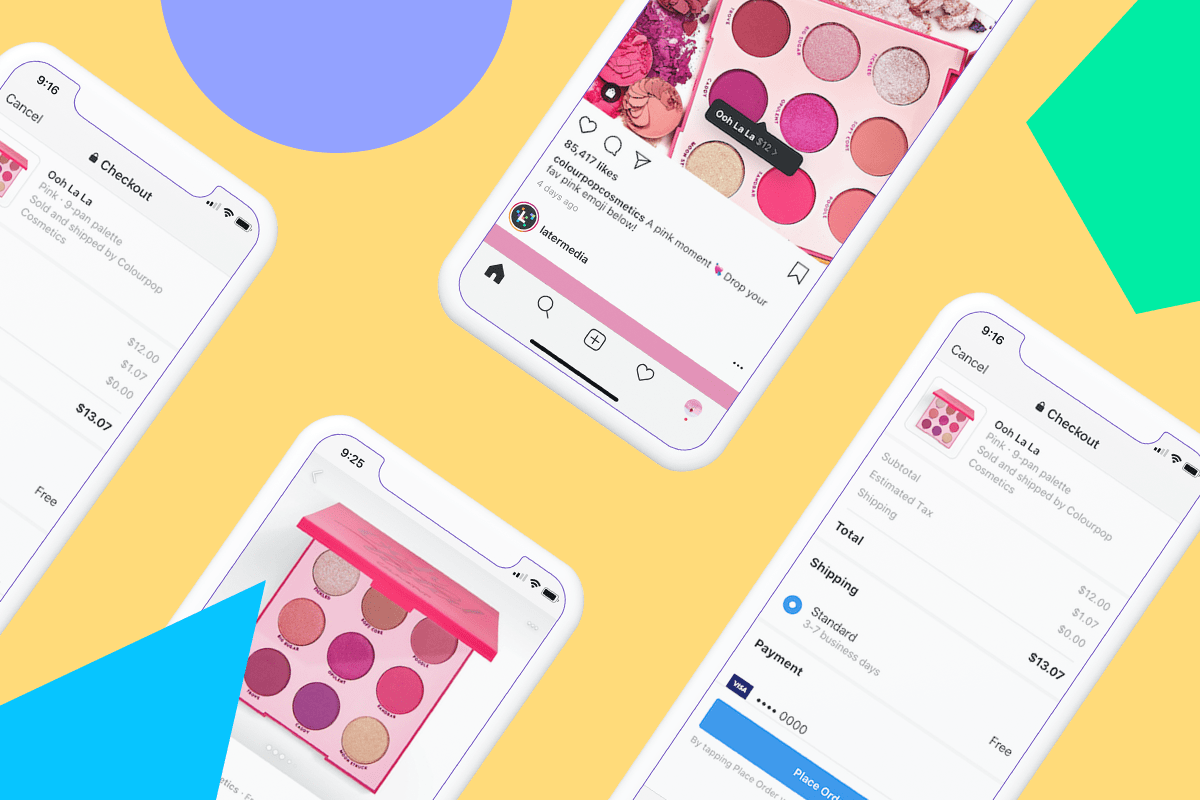IGTV monetization is finally here but they aren’t the only platform hoping to lure content creators in.
While YouTube was earliest to monetize creators, Facebook, TikTok, and Instagram are all testing their own ways for creators to earn money — and it seems to be working.
In the following post, we look at how different social platforms are compensating creators and what this means for brands.
Let’s get started!
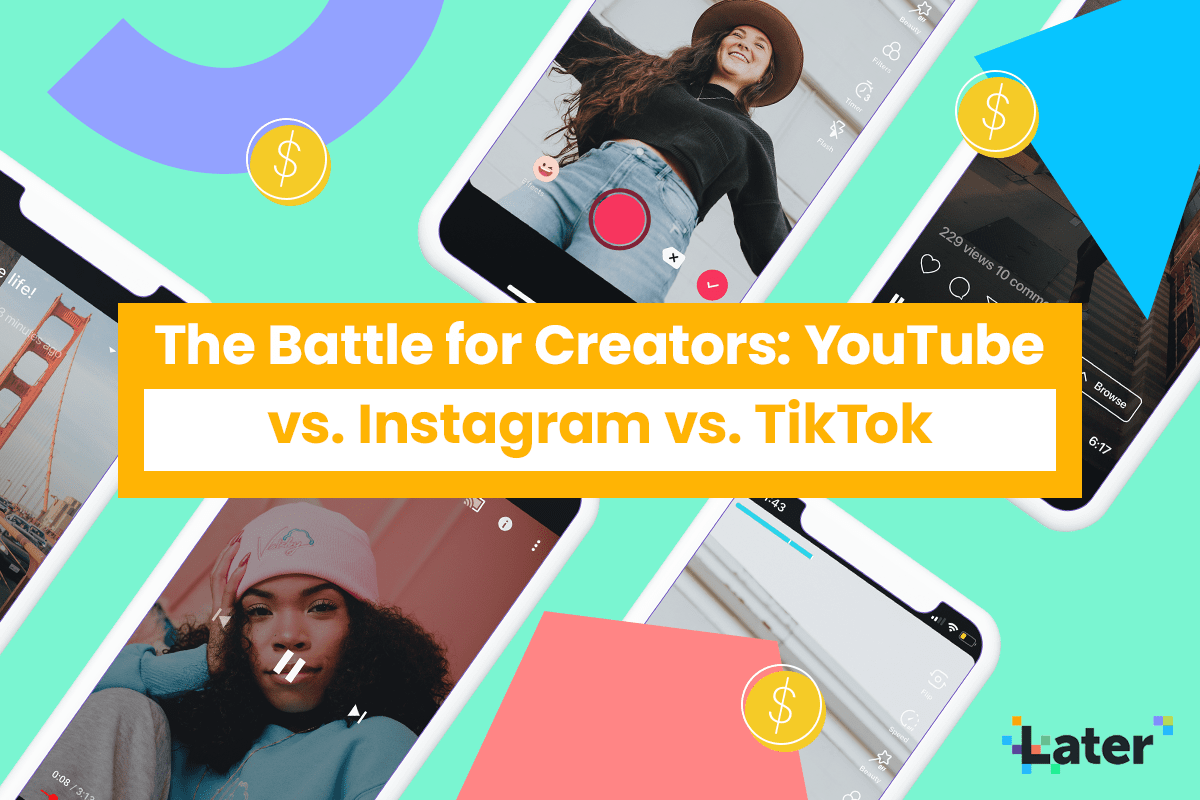
Moments before Kevin Systrom stepped onto the stage to announce IGTV in 2018, a video crew backstage made their way through a labyrinth of rooms filled with celebrity creators — mannymua744 applying makeup in front of a mirror, ninja playing video games (and then inexplicably dancing), katieaustin leading a fitness class.
The move wasn’t just about building “hype” for the launch, it was about showcasing some of the creators that Instagram hoped would use the platform (and bring their big audiences with them).
Instagram understood that in order for IGTV to be successful, it needed popular creators to actively share.
Of course, this isn’t always easy.
With so many competing platforms vying for people’s attention (YouTube, TikTok, and Instagram to name a few), persuading creators to use your platform can be tricky. And what it often comes down to is monetization.
YouTube figured this out pretty quickly. In fact, the first iteration of its revenue-sharing model for creators (called the YouTube Partner Program) was launched all the way back in 2007.
Those who were selected for the program (like HappySlip, Smosh, and ValsArtDiary) would be given a cut of the revenue from ads that were placed on their videos.

The program has gone through a lot of changes over the years, but the basic premise has pretty much stayed the same: If you meet YouTube’s eligibility requirements (currently, a channel needs at least 4,000 watch hours in the previous 12 months and 1,000 subscribers to qualify for the program), you can monetize your content.
And you can do this in a number of ways — by running ads on your videos and splitting the revenue (this is by far the most popular ways that creators make money on YouTube), through Channel Memberships, Super Chat, merchandising, and more.

As far as revenue sharing goes, YouTube pioneered the 55-45 model, whereby creators get 55% of ad revenue and YouTube keeps the remaining 45%.
And this is often explained as the main reason why YouTube has been so successful at attracting (and keeping) creators on the platform.
It allowed popular creators like PewDiePie, Lilly Singh, and Smosh to turn their passion for creating content into a career — and make a lot of money in the process.
According to the New York Times, Jenna Marbles was making more than six figures by late 2011. While in 2018, Newsweek learned that a select group of creators was making more than $1 million a month from their videos!
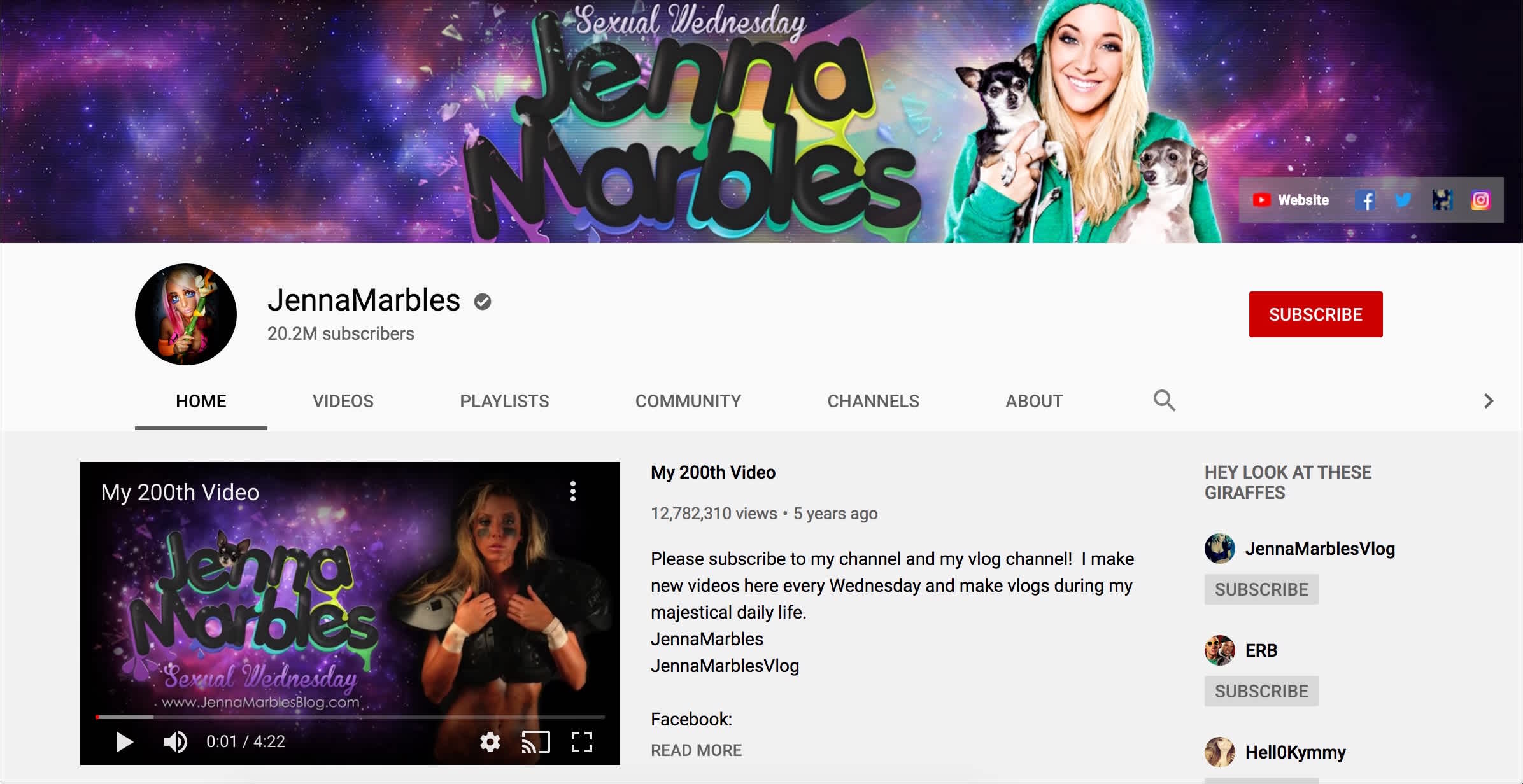
Instagram Announces New Monetization Tools for Creators
Earlier this year, for the first time ever, Google’s parent company Alphabet disclosed YouTube’s advertising revenue — which totaled $15 billion in 2019.
According to The Verge, Ruth Porat (Alphabet’s CFO) wouldn’t say how much of the $15 billion goes to its content makers, but she did specify those payouts belong to YouTube’s “content acquisition” costs, which run around $8.5 billion.
Just a day after YouTube’s disclosure, Bloomberg reported that Instagram made $20 billion in advertising revenue in 2019, a whopping $5 billion more than YouTube.
However, unlike YouTube, Instagram doesn’t share ad revenue with its creators… well not until recently, at least.
A day after Bloomberg reported on Instagram’s advertising revenue, Instagram confirmed to TechCrunch that it was prototyping an “Instagram Partner Program” with monetization tools for creators.
It’s no secret that we’ve been exploring this. We focused first on making sure the product had legs — else there would be little to monetize in the first place. IGTV is still in its early days, but it’s growing and so we’re exploring more ways to make it sustainable for creators.
— Adam Mosseri ???? (@mosseri) February 7, 2020
According to screenshots of the unreleased feature (courtesy of Jane Manchun Wong), users who are deemed eligible for the program will be able to earn money by running short ads on their IGTV videos.
Instagram is working on IGTV Ads to let influencers monetize their content by running short ads on their IGTV Videos pic.twitter.com/wOhbnpsfjL
— Jane Manchun Wong (@wongmjane) February 7, 2020
This move to let creators monetize their IGTV content is most certainly a strategic one.
One of the main reasons why IGTV had so much trouble attracting creators is because of its lack of monetization options.
Whereas popular YouTubers could make anywhere from $3 to $10 per 1000 video views, Instagram didn’t pay a dime for IGTV content (until recently) — so there was a lot less incentive for creators to keep posting.
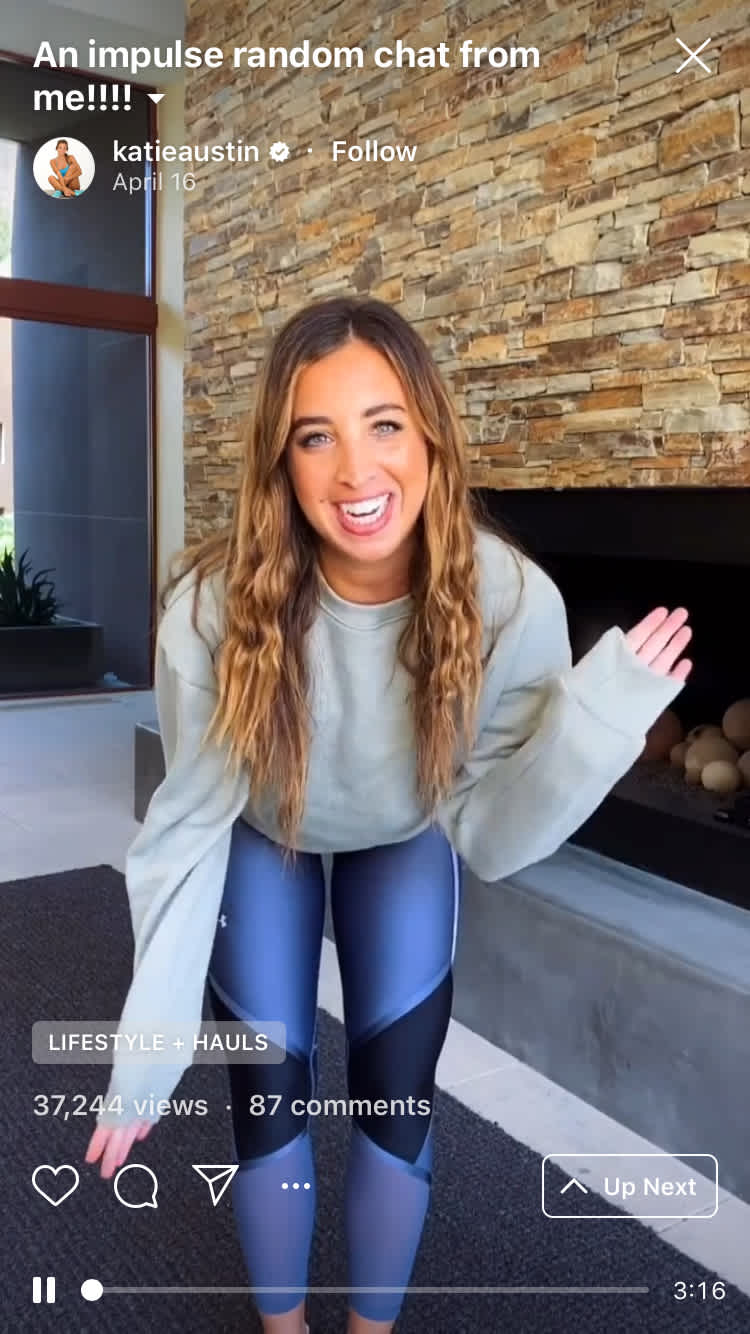
More information about Instagram’s plans to monetize IGTV came in March when it was revealed that Instagram had started reaching out to its top video creators, asking them to partner on ad tests.
According to the email, those in the program will receive a 55% share of all advertising in IGTV, the same rate as YouTube.
But then on May 27th, Instagram finally broke the news that it’s rolling out updates that will allow creators to earn money directly on IGTV!
These updates include new ads on IGTV videos, badges that viewers can purchase during a live video, and an expansion of Brand Collabs Manager, which is essentially Facebook’s own influencer marketing platform.
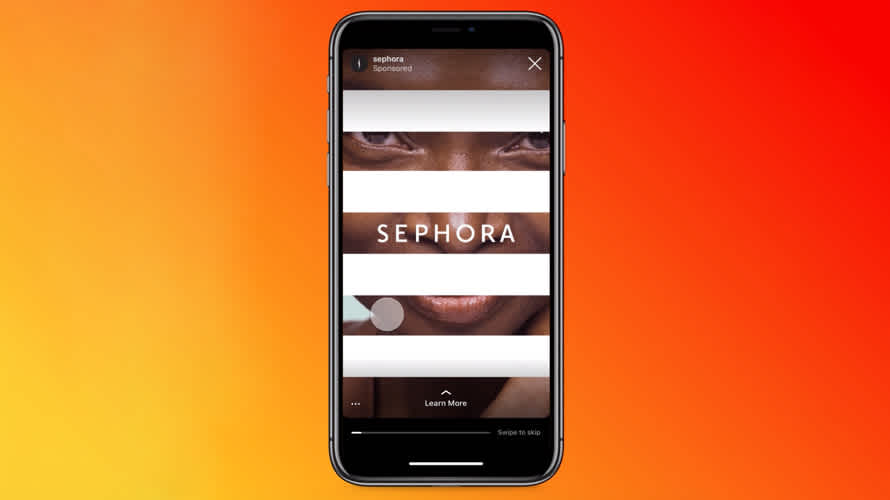
According to an interview with The Verge, Instagram’s COO, Justin Osofsky, shared that those in the program will receive an “industry standard” 55% share of all advertising on IGTV.
“Creators already put an incredible amount of effort into their content, and it’s crucial that they can make money from that content in order to fuel their work in the future,” Osofsky says.
As specified in the announcement, Instagram plans to test IGTV ads with a small group of creators and advertisers in the US and will expand slowly over time as they improve the experience. They also plan to test various experiences within IGTV ads throughout the year — such as the ability to skip an ad.
Osofsky also hinted at the possibility that Instagram will release even more monetization features in the coming months.
“There isn’t a one-size-fits-all approach to monetization, so we’re focused on building a suite of tools that can support the different needs and ambitions of creators in the long term,” Osofsky wrote in an email to The New York Times.
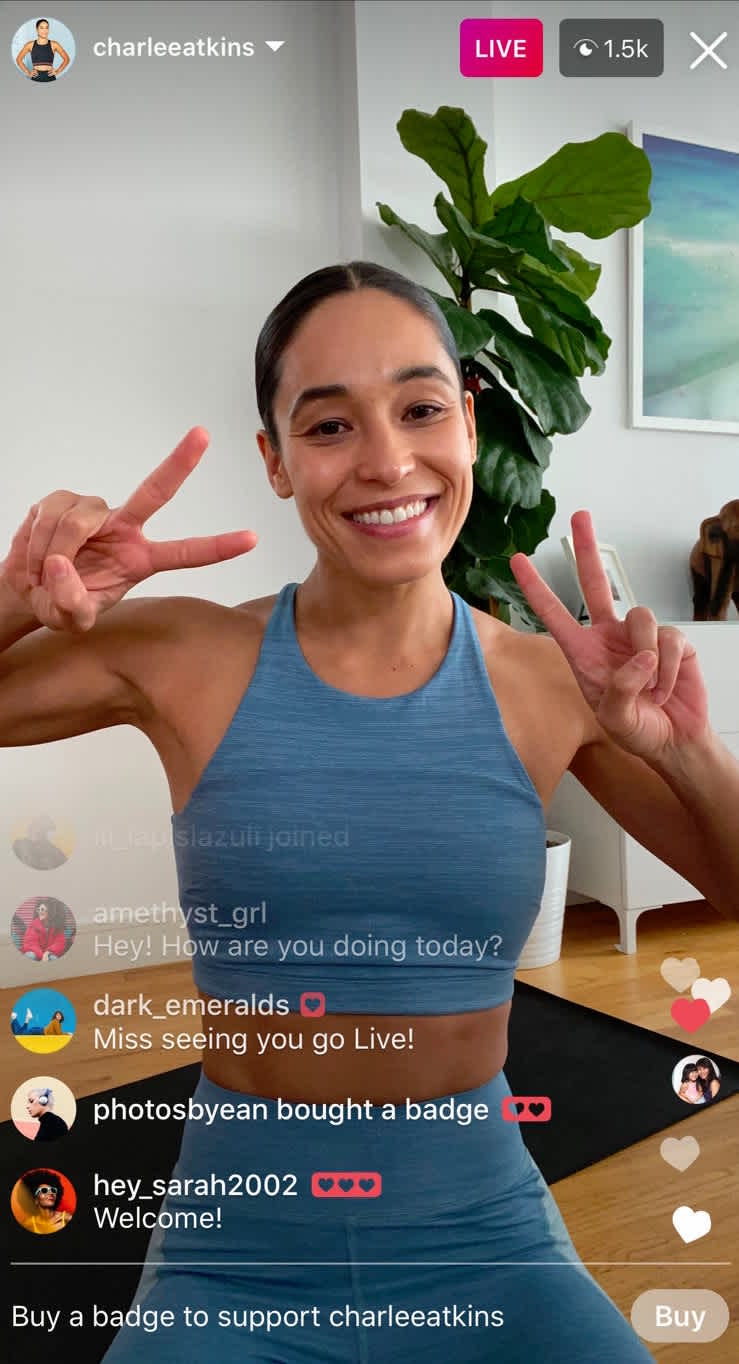
Of course, Instagram seems to have been heading in this direction for quite some time.
Since 2017, Facebook has been flirting with ways to monetize video content — from Facebook Watch (which uses the same 55/45 revenue sharing model as YouTube) to Brand Collabs Manager.
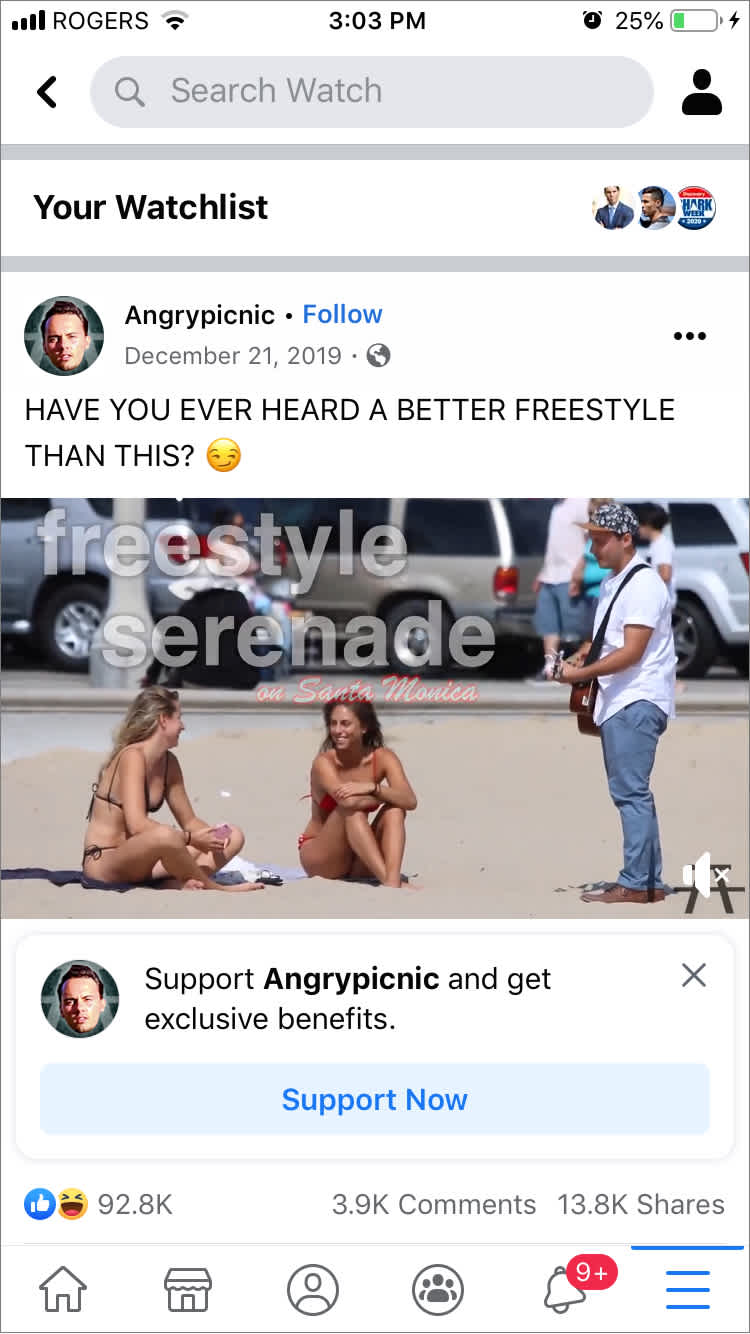
While in April of last year, Instagram announced that it was beta testing a new tool called Shopping from Creators that will allow influencers and creators to tag products in their posts from the brands they partner with.
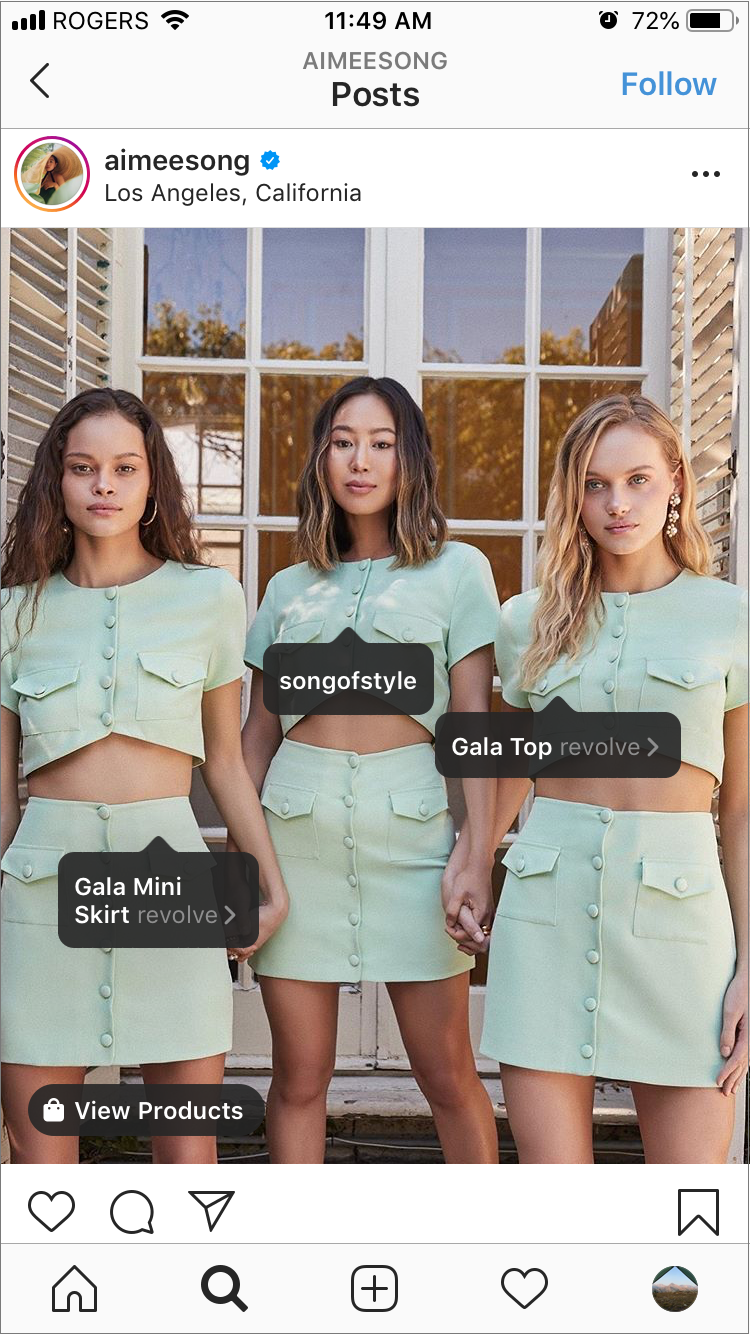
In July, Facebook announced several new ways for creators to monetize, including new ad placements, more paid groups, and the ability buy and send tips during live streams.
And then just a few weeks ago, Facebook announced that Facebook Events will soon have the option of charging attendees to join, giving creators yet another revenue stream.

Everyone Wants In On Creator Monetization
Instagram isn’t the only platform that’s gearing up to monetize creator content. We’re seeing it happen (although slowly) on many of the major social networks.
Just a few years ago, Twitter launched its Twitter Media Studio, which allows some users (those who’ve been accepted into the Amplify Publisher Program) to monetize their Twitter content via in-stream video ads and in-stream video sponsorships.

TikTok, on the other hand, began testing ads in the US and Europe earlier this year — their first foray into creator monetization. And just a few weeks ago, we learned they’re testing a “Shop Now” button for influencer videos, which is certainly a sign of things to come.
It remains to be seen how much TikTok ads will cost and how much of this revenue TikTok will share with creators, however, Digiday reported the company has been discussing a 20/80 split in TikTok’s favor — a pretty big margin compared to YouTube and (potentially) IGTV.
According to a TikTok spokeswoman, “TikTok is a platform for creative expression and a big part of that is showing and sharing the things you love with others. We’re in the early stages of testing a way users can add links to products to their videos and will share more updates when we have them.”
Nothing is set in stone, however, with the launch of TikTok’s Creator Marketplace late last year (which is a lot like YouTube’s Marketplace, which launched in 2012), the company is clearly looking towards creator monetization. The big question is when?
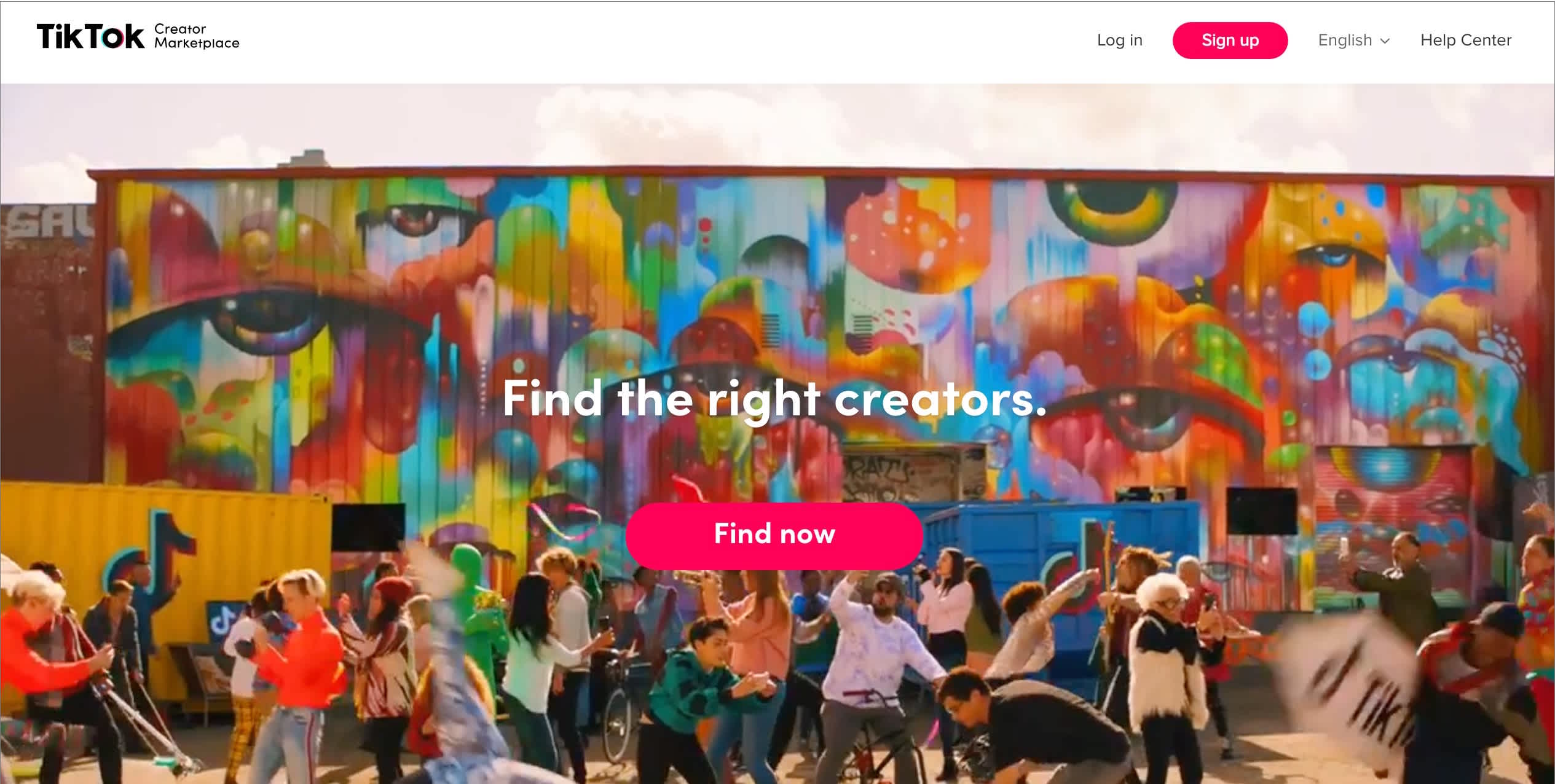
Meanwhile, a newer platform called Byte has already made revenue-sharing a key part of their offering.
According to a recent announcement, the company is in the process of rolling out a partnership program, which will allow creators to participate in revenue sharing and get compensated for the content they create.
The program is kicking off with a select group of 100 creators, and Byte plans distribute a total of $250,000 across four 30-day payouts based on each creators’ performance.
According to an interview with Byte’s co-founder Dom Hofmann (who also co-founded Vine), Byte’s long-term plan is to have most of its revenue going to creators, and a minority going to the platform itself.
news flash. next week we’re gonna start reaching out to cOnTeNt CrEaToRs for our partner program. some quick info on the first group of partners……
???? $250,000 in the pool???? up to a hundred creators???? kicks off april 15
more details here: https://t.co/T21JPbwalS
— BYTE.MP4 (@byte_app) February 28, 2020
All of this is to say that social apps are beginning to realize that if they want to keep their creators happy, they need to find ways to help creators turn their passion into a profession.
IGTV launched without a monetization strategy for creators, and while they’ve been able to slowly build interest in the platform, there’s no telling how fast it can grow if they launch a competitive revenue-sharing model.
The Winner? It’s Still TBD!
For the time being, YouTube is still considered the golden standard for creator monetization. But as more platforms incorporate revenue-sharing, this could definitely change.
It’s, of course, important to remember that monetization isn’t the only factor that creators take into consideration when deciding where to spend their time creating content — there’s also audience demographics, content formats, video length requirements, and a lot more.
But monetization is definitely becoming more important, especially as more platforms pop-up and compete for viewers’ attention.
Creators know their worth and platforms are beginning to take note.
